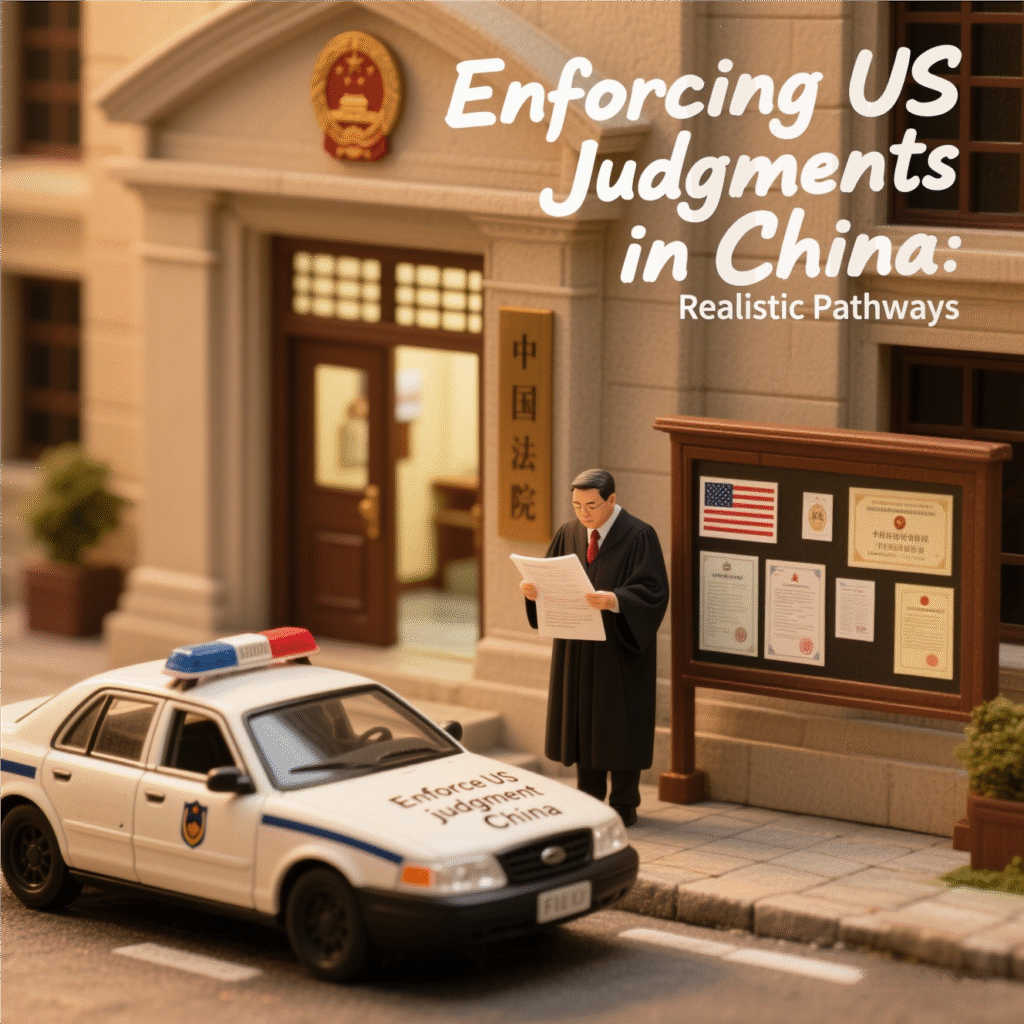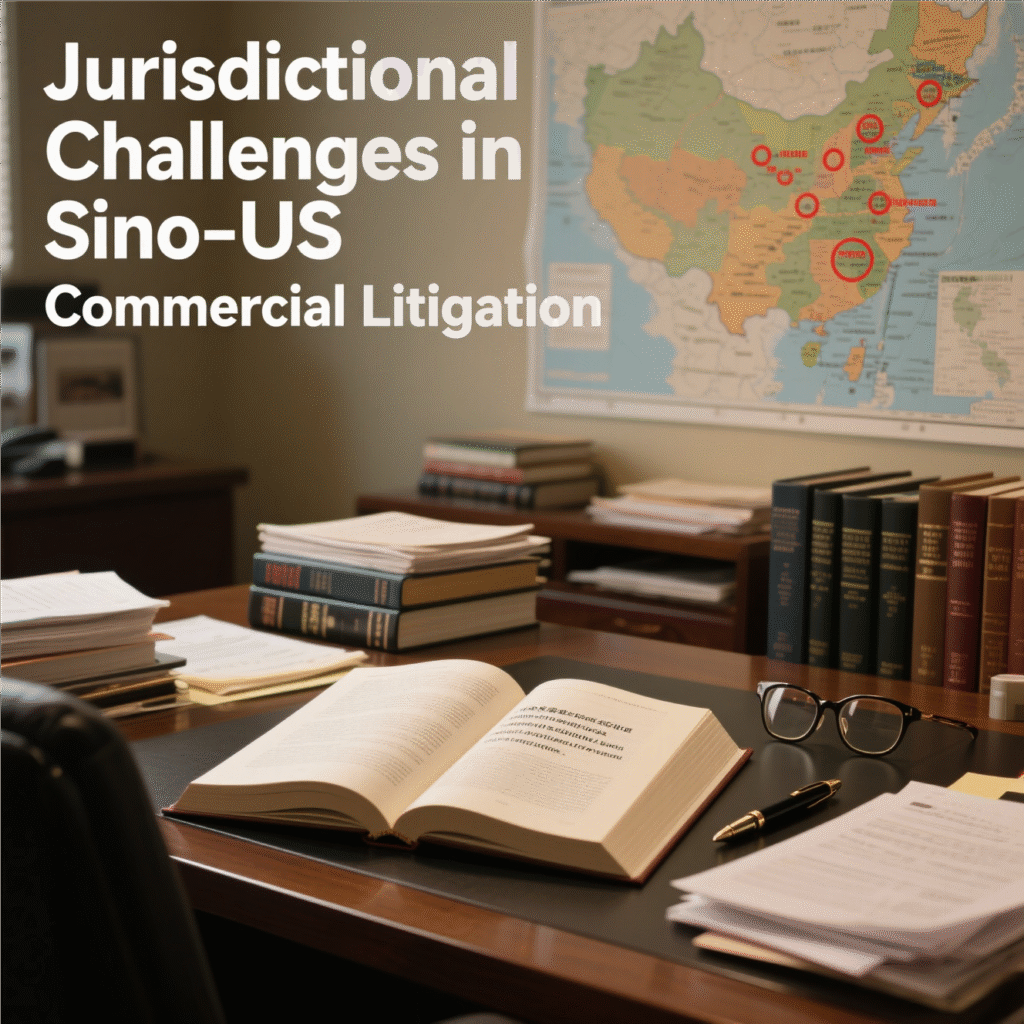In today’s globalized economy, businesses engaged in cross-border transactions face unprecedented legal complexities—particularly when disputes span China and the US. Successfully navigating these challenges requires not only expertise in dual legal systems but also strategic foresight in enforcement mechanisms. This guide outlines critical steps to protect your interests in high-stakes litigation.

🔹 1. Jurisdictional Challenges in Sino-US Commercial Litigation
When initiating litigation, jurisdiction determines the battleground. Key considerations include:
– Forum selection: US courts may assert jurisdiction over Chinese entities with US commercial ties (e.g., contracts governed by US law) .
– Parallel proceedings: Simultaneous lawsuits in both countries often occur. Proactive coordination is essential to avoid conflicting rulings .
– Sovereign immunity: Chinese state-owned enterprises (SOEs) may claim immunity in US courts, requiring tailored legal arguments .
⚖ Strategic Tip: Engage a China-US commercial litigation lawyer early to design forum-specific tactics, leveraging treaties like the Sino-US Judicial Assistance Agreement.
🔹 2. Enforcing US Judgments in China: Realistic Pathways
Keyword: Enforce US judgment in China
Contrary to popular belief, Chinese courts do recognize US judgments under strict conditions:
– Reciprocity principle: The US state where the judgment originated must have a history of enforcing Chinese judgments .
– Core compliance checks: The judgment must not violate Chinese public policy, and defendants must have received proper legal notice .
– Asset tracing: Pre-litigation identification of Chinese assets (e.g., bank accounts, real estate) is critical for post-judgment recovery .
💡 Case Insight: In 2023, a California judgment was enforced in Shanghai against a Chinese manufacturer after proving reciprocity through Delaware court precedents .
🔹 3. Data Compliance: The Hidden Hurdle in Cross-Bord
China’s evolving data laws impact evidence collection and transfers:
Cross-border data rules: The Personal Information Protection Law (PIPL) restricts exporting litigation-related personal data without security assessments .
US “long-arm” risks: US discovery demands may conflict with China’s data localization laws. Violations risk fines up to 5% of global revenue .
🌐 Solution: Work with counsel to implement compliant evidence protocols, such as anonymizing data or using approved cross-border transfer tools like the Standard Contractual Clauses (SCCs).
🔹 4. Trade Remedies & Sector-Specific Tactics
Keywords: US 337 investigation lawyer, CFIUS compliance lawyer
US ITC investigations: Defending against 337 patent claims requires rapid response—within 20 days of notice. Strategies include redesigning products or negotiating settlements .
CFIUS mitigation: For M&A disputes, pre-emptively structure transactions to avoid US national security vetoes .
China’s retaliatory mechanisms: Utilize China’s Unreliable Entity List or antitrust laws to counter US trade sanctions

🔸 Proactive Measures for High-Risk Industries
Industry Critical Protection Strategy
E-commerce Register trademarks in both USPTO and CNIPA
Manufacturing Draft contracts with dual-jurisdiction arbitration clauses
Tech/Pharma File patents under the Patent Cooperation Treaty (PCT)
Conclusion: Building an Enforcement-First Legal Strategy
Winning a cross-border lawsuit is only half the battle—the real test lies in enforcing US judgments in China. To maximize success:
Preserve evidence within PIPL/CCPA frameworks during discovery .
Secure pre-judgment attachments on Chinese assets via local courts .
Partner with local counsel in economic hubs (e.g., Shenzhen’s Qianhai District) to leverage China’s pilot free-trade zone courts .
🌟 Final Tip: Regularly monitor bilateral treaty updates, such as China’s 2024 Negative List for Cross-Border Service Trade, which expands enforcement channels for foreign awards .